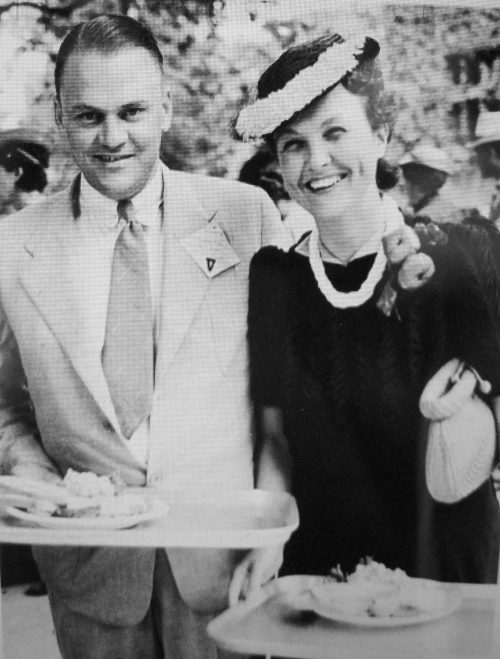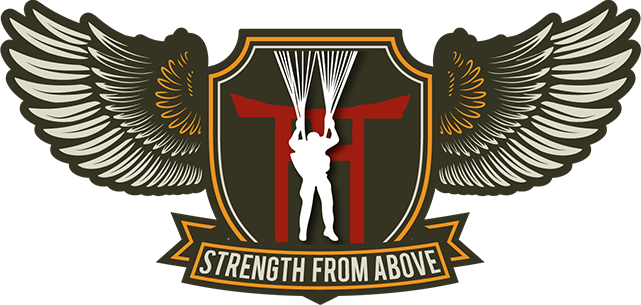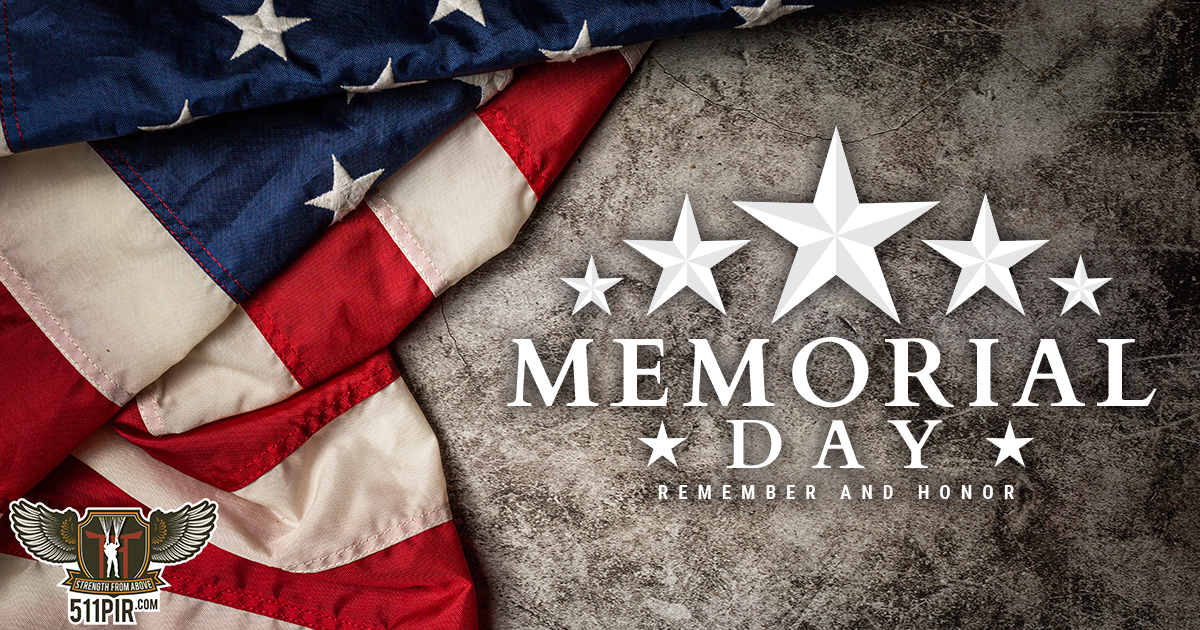Error
Seventy-five years ago on February 23, 1945 the 511th Parachute Infantry Regiment and the 11th Airborne Division ("The Angels") conducted their famous raid on the Los Baños internment camp on Luzon, Philippines. It is, perhaps, the regiment's most well-known operation (although their history is full of incredible campaigns). At Los Baños, the Angels were willing to risk heavy losses to rescue the 2,100+ men, women and children who had been prisoners of the Imperial Japanese forces since early 1942, so roughly three years. After the 11th Airborne landed on Luzon in late January and early February of 1945, Major General Joseph May Swing was tasked with effecting a rescue of the civilians held at the camp. The problem was that in early- and mid-February General Swing's Angels were heavily engaged in the fight for Manila and therefore he could not commit a force of sufficient size to conduct the raid for now. The internees would have to wait a few weeks more.
Despite horrendous conditions in the camp under the Imperial Japanese guards, the internees at Los Baños were in good hands, some would even say miracle-effecting hands. No, I am not referring to the camp's abundance of clergy who, after arriving in July of 1944, labored to keep up the spirits (and faith) of the internees (although some refused to help with the sick in the camp).
Rather, I am referring to the expert care and attention given to the men, women and children by the camp's doctors and their well-known attendants, The Sacred Eleven, eleven US Navy nurses who had been stationed at Sangley Point's Canacao Naval Hospital at the Cavite Naval Yards on Manila Bay and helped the wounded during the invasion of Manila in 1941. After US military forces were surrendered to the Japanese on January 2, 1942, The Sacred Eleven became prisoners and were first interned at the Santo Tomas Internment Camp before volunteering to transfer to the Los Baños Internment Camp in May of 1943 to help with the “hospital” there (even they would agree that given the camp's conditions it was only a hospital by the loosest of definitions).
Of note, the US Army nurses stationed at Santo Tomas refused to go to Los Baños. When Chief Nurse Laura Mae Cobb, who is the only chief nurse in navy medical history to continue her duties while in enemy captivity, asked her Navy nurses if they were willing to risk it, they all agreed. On the morning the nurses left Santo Tomas, someone managed to play “Anchors Aweigh” on the camp PA system to honor their spirit.
The Sacred Eleven consisted of:
Chief Nurse Laura Mae Cobb, Wichita, Kansas
LT JG Mary F. Chapman, Chicago, Illinois
LT JG Bertha R. Evans, Portland, Oregon
LT JG Helen C. Gorzelanski, Omaha, Nebraska
LT JG Mary Rose Harrington, Elk Point, South Dakota
LT JG Margaret "Peg" A. Nash, Wilkes-Barre, Pennsylvania
LT JG Goldia "Goldie" A. O'Haver, Hayfield, Minnesota
LT JG Eldene E. Paige, Lomita, California
LT JG J. Susie Pitcher, Des Moines, Iowa
LT JG Dorothy Still, Long Beach, California
LT JG C. Edwina Todd, Pomona, California
 Although they had virtually no medicine or supplies, the Sacred Eleven managed to establish a 25-bed infirmary (all made from pipes) at the camp to care for the sick and even the dying. There were initially two American civilian doctors at the camp, but they were repatriated in August 1943 and in their place the nurses got another American doctor, Dr. Dana Wilson Nance (1904-1988) of Nashville, Tennessee. Nance had been over the Benguet Mines Hospital at Baguio prior to the invasion then was interned in Camp John Hay (a former military instillation) and Camp Holmes (Camp #3) before being sent to Los Baños.
Although they had virtually no medicine or supplies, the Sacred Eleven managed to establish a 25-bed infirmary (all made from pipes) at the camp to care for the sick and even the dying. There were initially two American civilian doctors at the camp, but they were repatriated in August 1943 and in their place the nurses got another American doctor, Dr. Dana Wilson Nance (1904-1988) of Nashville, Tennessee. Nance had been over the Benguet Mines Hospital at Baguio prior to the invasion then was interned in Camp John Hay (a former military instillation) and Camp Holmes (Camp #3) before being sent to Los Baños.
Nurse Dorothy Still noted, "He was a young fellow, one of those charismatic characters who got out there with the baseball teams and was very concerned about his patients. He was a surgeon and brought his own instruments. Patients who had been sent back to Manila for surgery were now handled in our hospital."
In 1986, at a reunion of liberated prisoners of war, Dr. Nance stated, "For me, personally, I have forgotten some of the rough spots of internment, but I can say with satisfaction that I was glad to be needed. In a prison camp, a doctor is a must.”
And he was; Dr. Nance, along with The Sacred Eleven, was credited by the internees with saving countless lives which would have been lost to disease, malnutrition and other medical maladies, not to mention a simple loss of hope. Dr. Nance and The Sacred Eleven gave the civilians peace of mind in that while they were "guests" (aka prisoners) of Imperial Japan, at least if something happened to their bodies, someone was on hand to help, even if the medical staff constantly had to beg the Japanese for medicine and supplies.
As one internee testified, "We are absolutely certain that had it not been for [those] nurses, many of us who are alive and well would have died."
Working twelve hours a day, Nance and The Sacred Eleven treated an average of 200 patients a day, dealing with everything from tropical diseases (such as beriberi and dysentery) to dehydration, broken bones to stitching up cuts. Dr. Nance even performed an appendectomy on a patient, without anesthetic, who lived! The nurses mixed tree sap to create bandage adhesive, made slings from donated scraps and used the tops of cut beer bottles to create patient "bells" which could be rung to get their attention.
Malnutrition was a deadly problem that only grew in seriousness beginning in early 1944 and challenged the hospital staff and their wards. Due to the camp's cruel Japanese supply officer LT Sadaaki Konishi, during the last months of internment the nurses and civilians were consuming between 500-900 calories a day, often in the form of 300 grams of palay, or unhusked rice, that the prisoners had to creatively husk and cook themselves.
Chief Nurse Laura Cobb, who lost 30 pounds during her imprisonment, noted, "We got so we didn't especially mind the weevils, but the cockroaches and worms made eating tough going much of the time."
Many of the civilian internees remembered that Dr. Nance and the nurses all had cheerful dispositions which made the uncertainties of life behind barbed wire more tolerable. Dr. Nance would frequently play sports with others in the camp (when they had the energy to do so) and the nurses' kindness and smiles helped the often-traumatized prisoners feel the warmth of humanity while under the watch of less-than-humane guards. The nurses also delighted to lovingly help care for the camp's few newborns, including Lois Kathleen McCoy who was born just three days before the camp was liberated by the 11th Airborne Division. Of note, Nurse Dorothy Still would be feeding young Lois when the raid occurred at 0700 on February 23, 1945. She would shield young Lois with her body as the Filipino guerrillas and 11th Airborne paratroopers engaged the Japanese guards.
After the fighting died down, their 11th Airborne rescuers ushered the medical staff and their charges out of the camp. Those who could walk the two miles down the road to the landing beaches near Mayondon Point did so while the sick, elderly and some women and children were loaded into Amtracs of the 672nd Amphibian Tractor Battalion under the command of thirty-five-year-old LTC Joseph W. Gibbs. Gibbs' men helped load additional internees at the beachhead, then took off across Laguna de Bay towards Mamatid where the internees were loaded into trucks and ambulances and taken to New Bilibid Prison in Manila where they were given food, new clothing, showers, medical attention and more.
And while no internees forgot their rescuing Angels of the 11th Airborne, especially those belonging to the division's Recon Platoon and to Company B of the 511th PIR which parachuted into the camp, the names and faces of Dr. Dana Nance and the Sacred Eleven nurses (plus three civilian nurses) who did so much for their well-being during their internment are forever in their memory, as well as those of their descendants who know the full story of life at Los Baños.
Indeed, in an attempt to help The Sacred Eleven receive a special unit citation for their bravery and sacrifices for the internees at Los Baños, surgeon Dr. Dana Nance wrote, "They gave unstintingly of their time and professional skill beyond the call of duty for the alleviation of the suffering of the fellow civilian internees in Japanese internment camps."
Nance's words were ignored. The Sacred Eleven would have to be satisfied with the Bronze Stars awarded to them on March 10, 1945, though all internees and all related military personnel agreed with the words written on their citations which praised their "dauntless determination, zealous efforts and unselfish devotion to duty in the face of unprecedented hardship."
Perhaps the most powerful commendations given to these incredible nurses, and to Dr. Nance, came from their fellow internees and their 11th Airborne Division rescuers, who went beyond the "Sacred Eleven" epithet and reverently called the undefeatable nurses by a name they knew well: "Angels."
To learn more about the 11th Airborne Division in World War II, please consider purchasing a copy of our books on the Angels:










